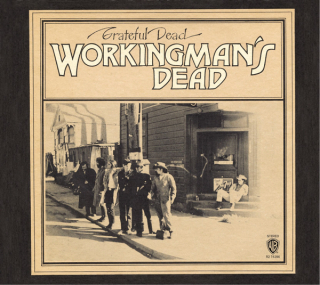One of the most influential rock groups of its era, the Grateful Dead is a band best known for its rich and layered harmonies, engaging lyrics and complex instrumentation. These characteristics are on full display in its 1970 masterpiece and third studio album Workingman’s Dead.
The album, which is considered to be one of the finest ever recorded by the Dead, was made in San Francisco over a period of less than two weeks. Although the songs, which were chiefly penned by lead guitarist Jerry Garcia and lyricist Robert Hunter, were also written quickly.
Even so, the expedited recording process does not affect the quality of the album; instead, it remains one of the Grateful Dead’s most stunning works.
Musically, Workingman’s Dead contains some of the best songs in the Grateful Dead catalogue. The opening track, “Uncle John’s Band,” has become a favorite among fans of the group and was one of its most frequently played songs on tour. The lyrics are obscure in meaning, but in general, they tell of a fictional band and its performances by the side of a river. The music itself is highlighted by Garcia and guitarist Bob Weir’s classic acoustic parts, as well as some of the tightest harmonies of any Dead song.
The album’s other bookend, “Casey Jones,” is a retelling of the story of the great American engineer who died in an effort to stop his train and save the lives of his passengers. With a fun tune, instantly recognizable guitar parts and smooth basslines from bassist Phil Lesh, this song has also become a fan favorite.
The great tracks don’t stop there. Throughout the album, the Dead show that they are masters of conveying the stories of normal people, most of whom are assumed to hail from the American South. “Dire Wolf” and “Cumberland Blues” (the only track on which Lesh is credited as a songwriter) exemplify this ability. The former describes a man’s dealings with a seemingly evil wolf, while the latter features a hardworking miner as its narrator. Although the Dead were more of a psychedelic rock group at this point, songs like these are the ones that diversify their discography and allow them to appeal to lovers of folk and country music.
The most striking aspect of Workingman’s Dead is the band’s use of rich harmony throughout. Although this has become a trademark of the Grateful Dead’s music, their previous two albums contained surprisingly little of it. Many credit the members’ friendship with Crosby, Stills and Nash, a band that is still revered for its harmonies, as the impetus behind this shift. The result can be best heard on “Uncle John’s Band,” a track on which Garcia, Weir and Lesh are singing distinct parts for the entire duration.
Ultimately, Workingman’s Dead is an album that is epic in scope and broad in appeal. With intricate harmonies and precise instrumental parts, it is musically impressive, yet the Dead combine great storytelling with Southern flair. The result is a psychedelic folk album that was among the first of its kind and is worth a listen at any time.





